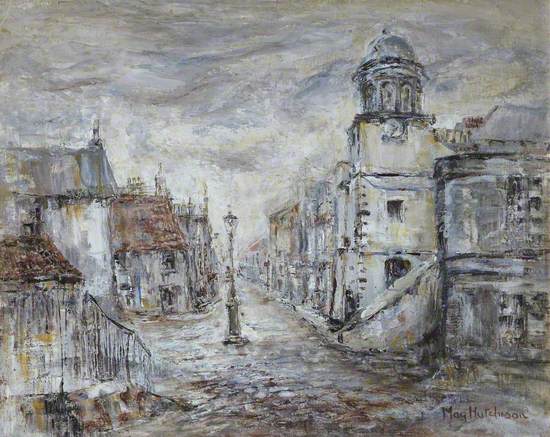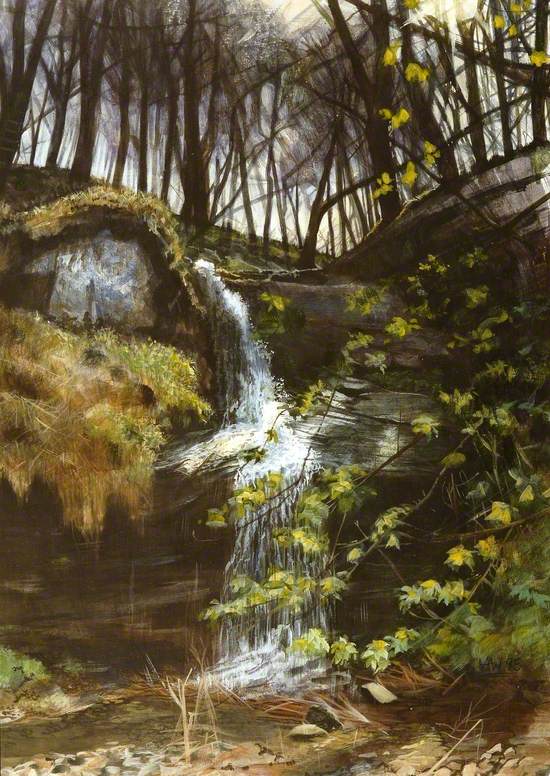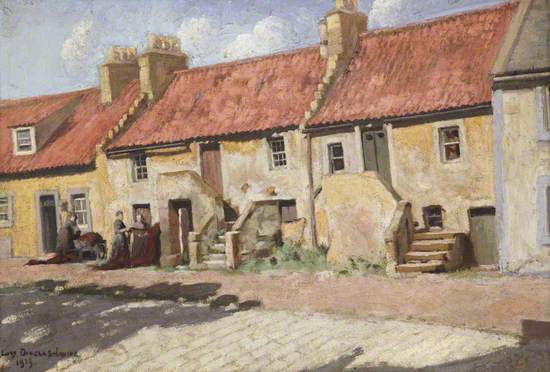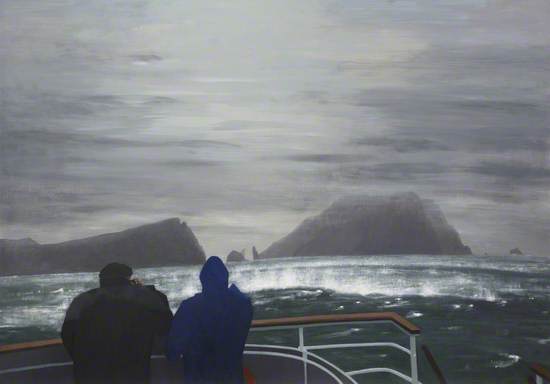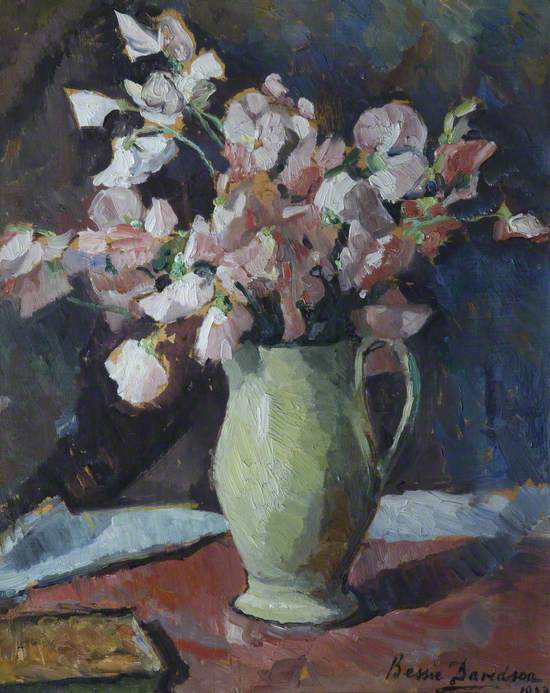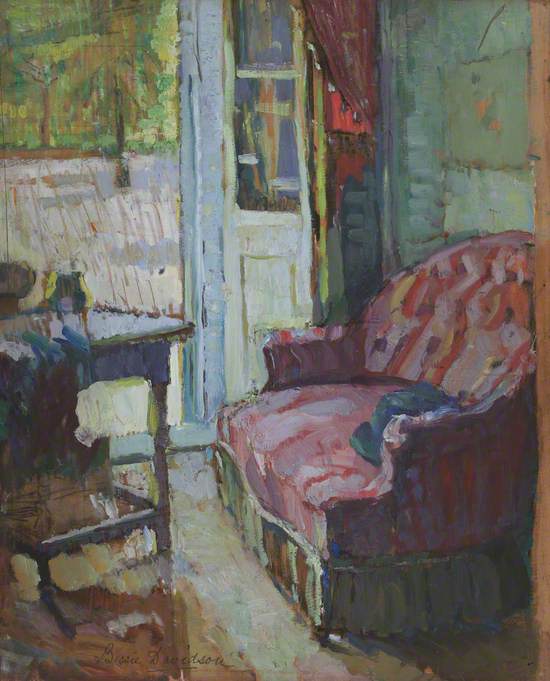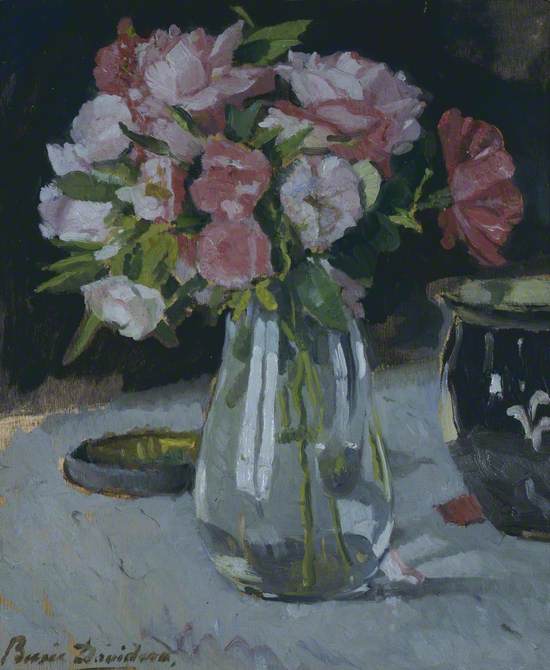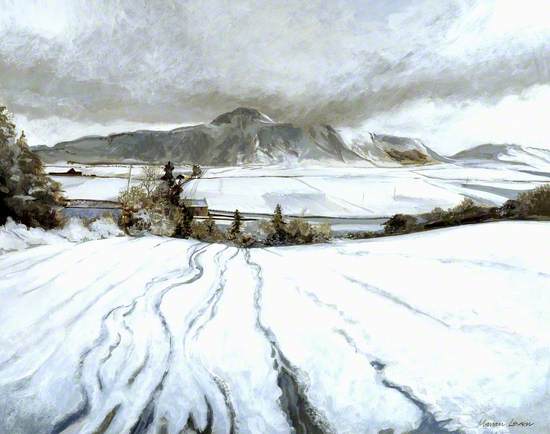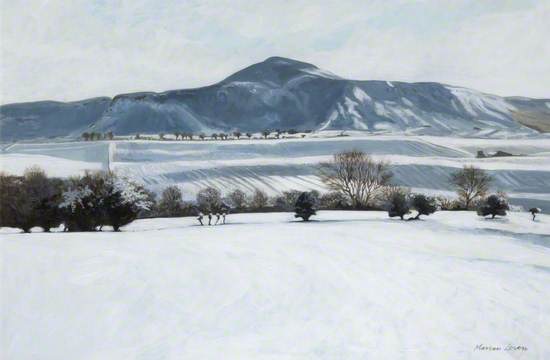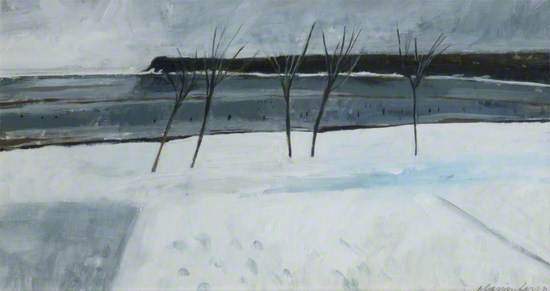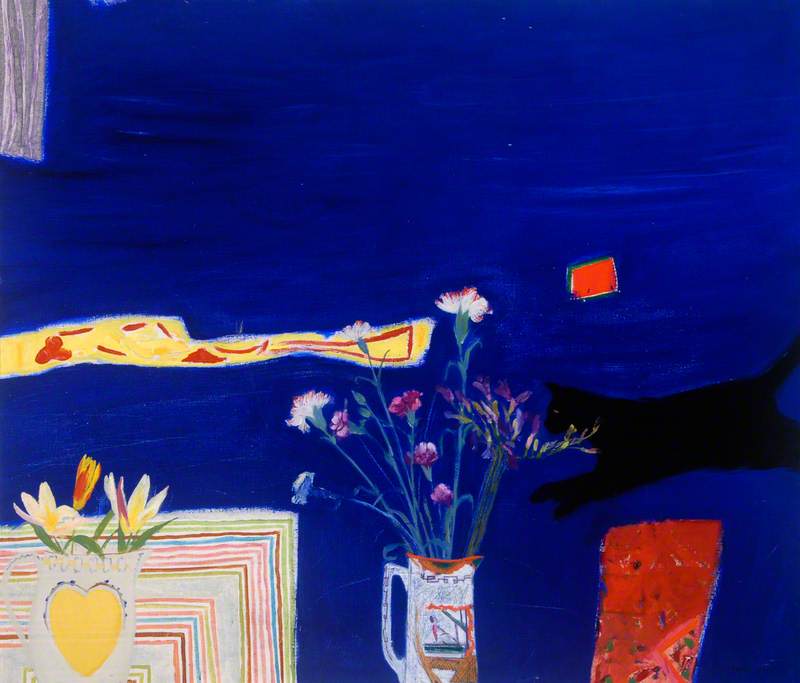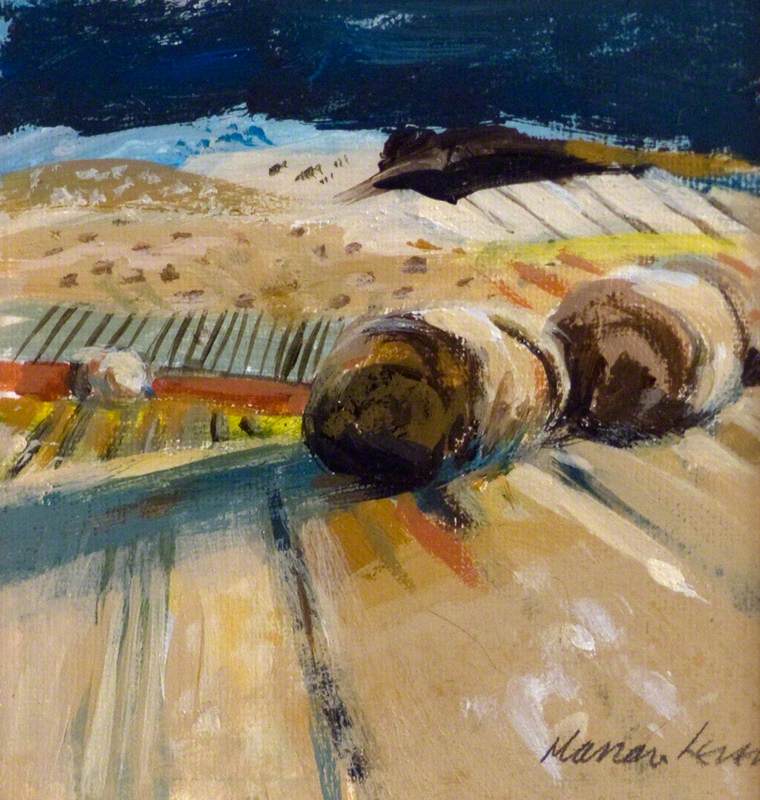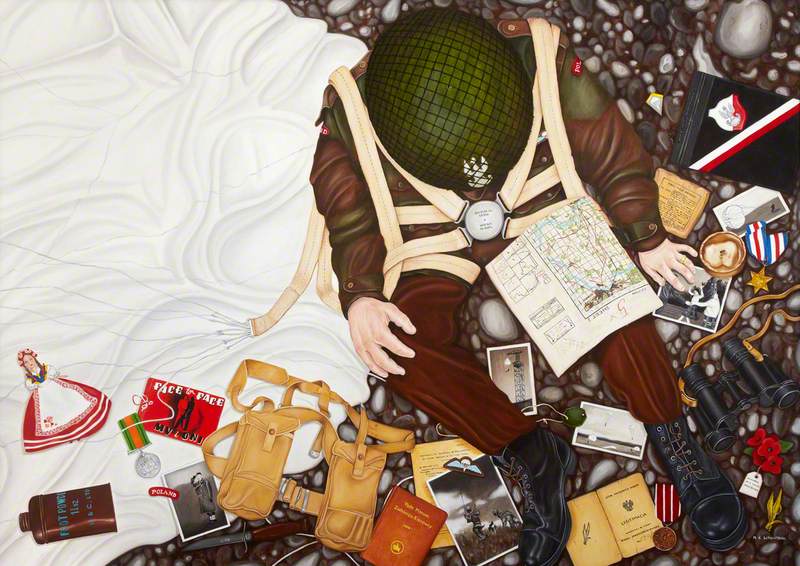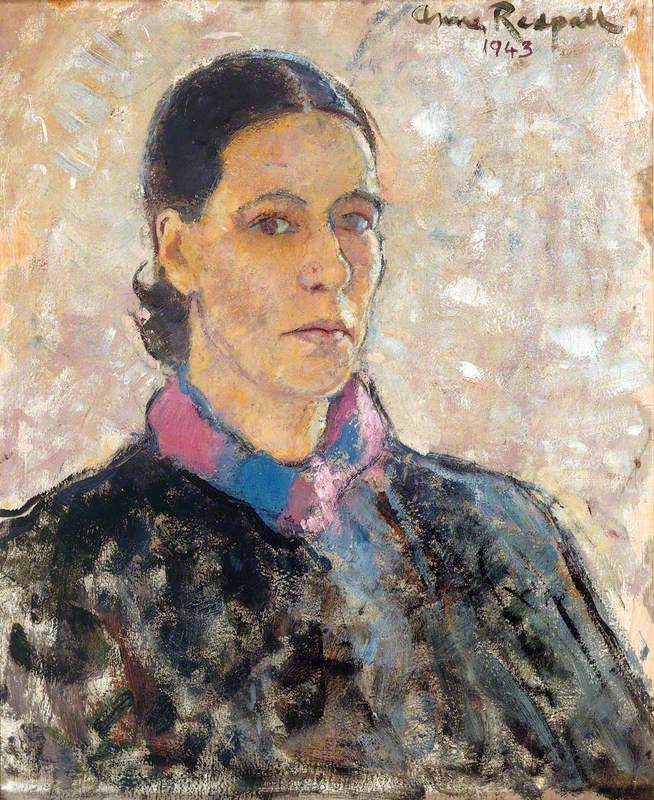Women artists are underrepresented in public collections, and ours is no exception. However, we do have some very fine examples of work by 19th and 20th century women artists, some widely known, others perhaps less so, many with strong Scottish or Fife connections. Here you can see works by well-known artists such as Elizabeth Blackadder, Joan Eardley, Anne Redpath and Frances Walker.
We have more works by all four, as well as works by Alison Watt, Kate Downie, Sue Jane Taylor, June Redfern and Wilhelmina Barns-Graham, amongst others. Many are watercolours, prints and drawings, so couldn't be included here. We also have other paintings that came to us after the completion of the Art UK project. We hope you enjoy this small selection.
.
Breaking Wave
Born in Warham, Sussex, Eardley moved to Glasgow in 1939, enrolling at Glasgow School of Art. She was soon recognised as an exceptional talent, painting scenes of working class life and capturing fast-disappearing communities.
From the early 1950s, she divided her time between Glasgow and the village of Catterline, near Stonehaven. She often worked on the shoreline, carrying canvases down the cliff path, anchoring them with ropes and rocks.
Her work became more expressive, with spontaneous brushwork, drips and scribble-like marks. Breaking Wave, painted at Catterline, captures the power of the sea – the surf roaring into shore, creels and fishing gear scattered to the winds. Texture has been added to the canvas with sand and grit.
Joan Kathleen Harding Eardley (1921–1963)
Oil on board
H 124.5 x W 143 cm
Fife Council
Dysart Cross
A Scottish artist based in Fife, Hutchison began to develop her skills as a painter after a serious illness. She worked in oils, in an impressionistic style. Her subjects were mainly landscapes, figures in landscapes and flowers.
The historic old town and royal burgh of Dysart is situated on the Fife coast and is now considered to be a suburb of Kirkcaldy. The building to the right of the cross is the Old Tolbooth, still in existence today.
Waterfall Dura Den
A painter and illustrator based in Fife, her work is inspired by Scotland’s landscapes, agricultural heritage and wildlife.
Dura Den is a small, wooded, gorge, some 3km in length, situated near Cupar, Fife. The fast-flowing river once provided powered mills for the local flax industry. It’s a beautiful walk and is also an area of significant geological interest.
Pittenweem
Although born in Surrey, the artist has ties to Fife through her family’s links to Grangemuir House, near Pittenweem. There are also links to St Andrews. The Douglas Cottage Hospital, opened in 1866, was funded by the family in memory of her grandmother, Lady William Douglas of Grangemuir.
She painted in watercolours, mostly coastal and rural scenes. This view of fishermen’s houses at Pittenweem in the East Neuk of Fife celebrates the area’s heritage. It’s still an active port, with a fish market every morning. The name Pittenweem comes from a combination of Pictish and Gaelic and means, ‘place of the cave’, referring to St Fillan’s Cave, now regarded as a shrine.
Lucy Christina Douglas Irvine (1874–1940)
Oil on canvas
H 66.2 x W 88.6 cm
Fife Council
.
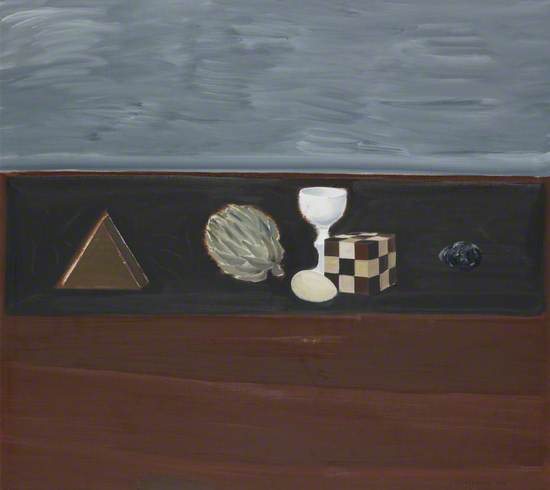
Still Life with a Goblet
Born in Falkirk, Blackadder studied at Edinburgh College of Art. She married fellow artist, John Houston, in 1956. She is equally well-known as both a painter and a printmaker. In 2001 she became the first woman to be made Her Majesty’s Painter and Limner in Scotland. She is also the first woman to become a member of both the Royal Academy and the Royal Scottish Academy.
She sees still life as a way to explore colour, pattern and shape, and has a vast collection of small objects - toys, tableware, stones etc – which she uses as a props. She likes to consider the ‘negative space’ between objects, often depicting them against a flat background. She lives and works in Edinburgh and is considered one of Scotland’s finest living artists.
Elizabeth V. Blackadder (1931–2021)
Oil on canvas
H 71 x W 76 cm
Fife Council
Leaving St Kilda
Born in Kirkcaldy, Fife, Frances Walker is one of Scotland’s most highly regarded living artists. She studied at Edinburgh College of Art and later trained as a teacher. She was the visiting teacher of art for all the schools on Harris and North Uist, in the Western Isles. She then taught at Gray’s School of Art, Aberdeen, until she retired in 1986.
Her time in the Western Isles gave her a lifelong love of wild and lonely places. Her travels have taken her to some of the world’s most remote and dramatic landscapes, for example, Iceland, Finland, South Georgia and Antarctica. Much of her work also focuses on the wild craggy coastlines and deserted beaches around Scotland.
Passing St Kilda
St Kilda is a remote group of islands situated 40 miles north west of North Uist, making them the westernmost islands of the Outer Hebrides. The main island is Hirta. The islands have no permanent residents. During the 19th century the population declined and the community became increasingly isolated. Deciding that their way of life was no longer sustainable, the last 36 islanders were taken to the mainland, at their request, on 29 August, 1930. Now, St Kilda is home to nearly one million seabirds and is the UK’s only dual UNESCO World Heritage Site.
.
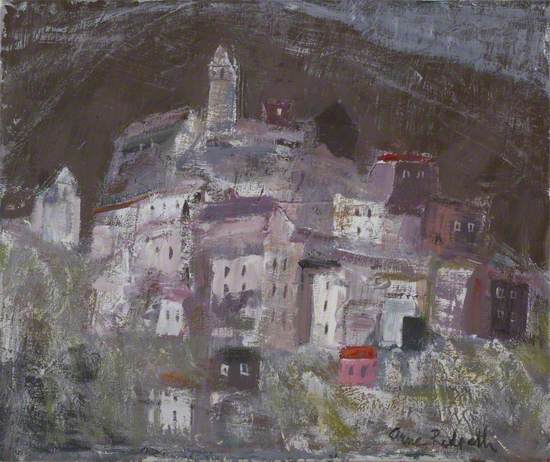
Peille, A Hillside Village
Born in Galashiels, Redpath studied at Edinburgh College of Art. Although best-known for her vivid, domestic still lifes, she also painted a numerous landscapes. Her later work – created after a serious illness – is often regarded as her most accomplished.
Early experiences of living in France and later travels abroad to Spain, Portugal and Italy were important influences. ‘If one painted nothing but still life one would fall into the narrow range of one’s own natural selection. To go to Spain and find dark grey skies and white villages; to Italy and find that the sky is more violet than blue… all this encourages one’s range of colour and responsiveness’. Peille is a medieval mountainside village in the south east of France.
Memories of a Polish Paratrooper
Born in Lincolnshire, Wrightson studied at Duncan of Jordanstone College of Art & Design, Dundee. She describes herself as primarily a realist, still life painter. Her work has a central theme of shared moments and treasured memories.
Recently featured in The Guardian’s Great British Art Tour, this painting was created as part of an exhibition put together by Fife Contemporary, which saw chosen artists creating new work in response to objects held in Fife’s museum collections. Many Polish servicemen, including the Ist Independent Polish Parachute Brigade, were based in Fife during World War Two. All of the objects featured in the painting are part of a collection donated largely by Polish servicemen and their families.
Marie Louise Wrightson (b.1972)
Oil on panel
H 110 x W 154 cm
Fife Council
Sweet Peas
Born in Adelaide, Australia, to Scottish parents, Bessie Davidson became known for her impressionistic, light-filled still lifes and interiors. She led an adventurous life, dividing her time between France and Australia, and making regular visits to relatives in Scotland.
She studied art in Adelaide and Paris, forming a wide circle of artistic and literary friends in both countries. She exhibited regularly and travelled widely in Europe. When World War One broke out in 1939 she was in Australia but set sail immediately for France. She joined the French Red Cross and went on to run a hospital for servicemen. In 1931 she was appointed to the Legion d’honneur, the highest order of merit in France.
Interior with a Couch
From the 1930s onwards, Davidson’s paintings were noted for their vigorous brushwork and deep, dramatic colour palette. Her work was popular with the public and sold well. In a letter home to her father she wrote, ‘Do not worry about me. I can sell as many pictures as I paint’.
Roses
Davidson was was well-known and she exhibited widely, both in Australia and Europe. She was also much respected as president of La Societe Nationale des Beaux Arts and vice president of La Societe Femmes Artistes Modernes. Many of her works are held by the National Gallery of Australia in Canberra.
Lomond Winter
Born in Auchtermuchty, Fife, Leven studied textile arts at Gray’s School of Art, Aberdeen. She paints in oil, watercolour and acrylic, and is also known for collage work, sculpture and land art.
She is probably best-known for her Scottish landscapes, although some of her pieces are abstract. She has also worked on public art commissions with her husband, Will MacLean, internationally renowned for his box construction art. The couple live and work in Tayport, Fife.
West Lomond, Snow
With a family background in weaving, Leven’s work is rooted in Scotland’s social history, often through its landscape and weather – ‘My painting allows me to respond to this environment in the knowledge that I am part of a long history of people shaped by these conditions’.
She has taken part in more than forty solo and group exhibitions and has won several awards, including in 2013 the Saltire Society’s Award for Arts and Crafts and Architecture for An Suileachan on the Isle of Lewis, a joint project with her husband, Will MacLean.
Winter, Tentsmuir
Tentsmuir is a large, forested area alongside the banks of the River Tay, near Tayport, Fife. Many of Leven's landscapes depict areas local to her, reflecting her heritage and continuing strong ties to the land of her birth and the people who live and work there, now and in the past.
Noted for its wildlife, Tentsmuir offers wonderful walks and is also interesting because of the remains of World War Two defences along the shoreline.

